Learn how to sell on Instagram Shopping with our in-depth guide.
According to recent data, Instagram is used by just under 25% of the world’s internet users. That's 1.245 billion people, representing a huge audience for brands and retailers that want to sell on Instagram, no matter where they are in the world.
How do you sell on Instagram Shopping?
- First go to Commerce Manager on Instagram
- Decide how you want your customers to complete their purchase and select a checkout method
- Decide whether to have your shop on Instagram or Facebook. Why not select both?
- Add products to your shop by connecting your existing product catalogue or by creating a new one
- Finally, review your shop, then submit it to Instagram for review
Now let's get into it in a bit more detail.
- What is Instagram Shopping?
- How does Instagram Shopping work?
- How to set up Instagram Shopping
- Instagram Ad Types
- Best practice for Instagram Shopping
- Conclusion
What is Instagram Shopping?
Instagram Shopping includes a series of features designed to make your products easy to discover on one of the world’s most popular apps. It begins with the creation of an Instagram shop, which users can visit and browse (and buy). But that's just the beginning of the product discovery process on Instagram. Sellers can also use Product tags to highlight items from their catalogue directly into images and videos – including in Feed, reels, stories and product mentions. So brands and retailers can highlight their products easily, making them instantly shoppable.
Almost 50% of users surveyed by the company buy something on Instagram weekly.
How does Instagram Shopping work?
At its heart, Instagram Shopping is a series of features that help retailers to sell.
Instagram Shop
The journey starts with your Instagram Shop, which is your digital storefront on Instagram. This is where buyers interact with your images and videos, hoping to find something to inspire them or, in a lot of cases, purchase.
Brands and retailers have complete control over their shops. Upload your catalogue and create collections to make it as simple as possible for users to browse.
Collections
A collection is exactly as it sounds – a group of products under one banner. You might have a summer or winter collection or perhaps that’s too broad? Think about how your customers like to shop and what they are most interested to see. New arrivals, bestsellers and limited editions are examples of popular collection titles.
Product Tags
Product Tags are the key to getting your products seen. They allow brands and retailers to experiment with how they are seen on Instagram Shopping. You can highlight items from your product range directly onto images and videos across the app. That means tagging on feed posts, reels and stories. You can even tag product mentions in your bio or in feed copy.
Ads can also use product tags. This improves the reach of your posts to many more consumers and can be set up in Ads Manager. Alternatively, existing posts can be made shoppable and boosted to improve reach and visibility.
The idea is that users simply tap on a product tag to learn more, and eventually purchase the item. But where does all that information come from? The answer is from your Product Detail Pages (PDPs) which, in turn, come from your product data feed.
Product Detail Pages
Product Detail Pages are the most important part of the Instagram Shopping process. As the name suggests, they provide the product details that consumers need to consider before buying.
As well as being useful for your own content, Product Detail Pages also pull in content where your product has been tagged by users.
Powered by product feed data, a Product Detail Page is only as good as its source. So make sure that your product feed management is up to scratch. That means filling out every field (especially the recommended ones) and then optimising key data for selling on Instagram.
Unsure if your feed is good enough? Book a free product feed audit from Intelligent Reach and have one of our experts go through it for you.
Checkout on Instagram
A key part of the definition of a social commerce site is that it provides in-app purchasing. This means that users don't have to leave the app to complete their purchase.
With Checkout on Instagram ( and, of course, Checkout on Facebook), your PDPs no longer send users to your own website. Instead, consumers check out directly in the app.
How to set up Instagram Shopping
Sellers looking to experiment on Instagram Shopping will need to do a little admin first. Thankfully, it isn’t too difficult, especially if you already have Facebook Business Manager.
- Ensure that your business has its own website domain, that the products you are promoting on Instagram are for sale at that web domain, and that you abide by Commerce Eligibility Requirements.
- Check that you operate in a supported market. If Instagram is popular in your country, chances are you will be fine. The only exceptions currently are India (where older shops can still operate but no new shops are currently allowed owing to recent legislation), and Ukraine (due to the ongoing war).
- Confirm that your Instagram profile is a business account and connect it to your Facebook page.
- Set up a Business Manager account in order to set up your shop in Commerce Manager. This will also allow you to manage your ads and your pages and to monitor who has access to operate your account. You’ll also receive various notifications and analytics about how your ads, posts and pages are performing.
- Start the onboarding process by setting up your shop in Commerce Manager or by using the Instagram app. Alternatively, keep things simple by onboarding your product feed using a product feed management platform like Intelligent Reach's.
- Finalise your shop details in Commerce Manager. This includes the checkout method, sales channels (your shop can feature on Facebook too), and adding more products as necessary.
- Review everything yourself… And then submit to Instagram for review.
Instagram Ad Types
As well as setting up Instagram Shopping, you can also advertise on Instagram. Ads are posts with a ‘Sponsored’ label on them. They are available in many different formats, which we outline below.
Image Ads
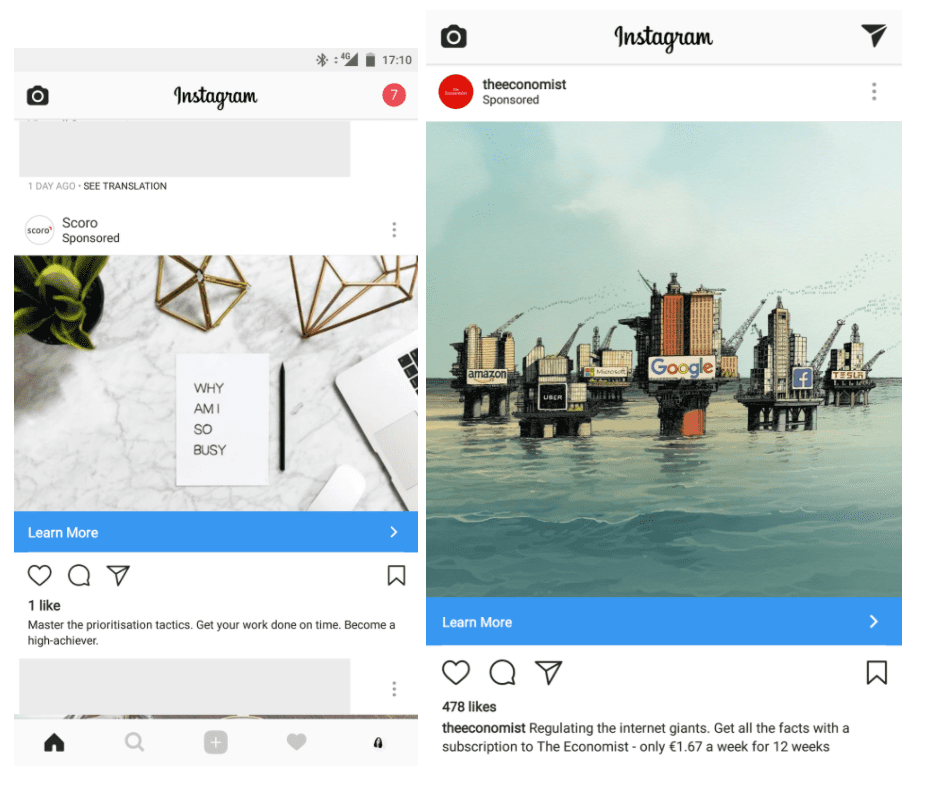
Image ads were the first Instagram format and are probably the advertisement that someone first thinks about when hearing the phrase ‘Instagram ad’. They take the form of a square image that appears in the feed as a user scrolls. They often feature a ‘Shop now’ button which takes anyone who clicks to a product page. Mainly used for visually appealing campaigns, these ads require photography of the highest quality.
Video Ads
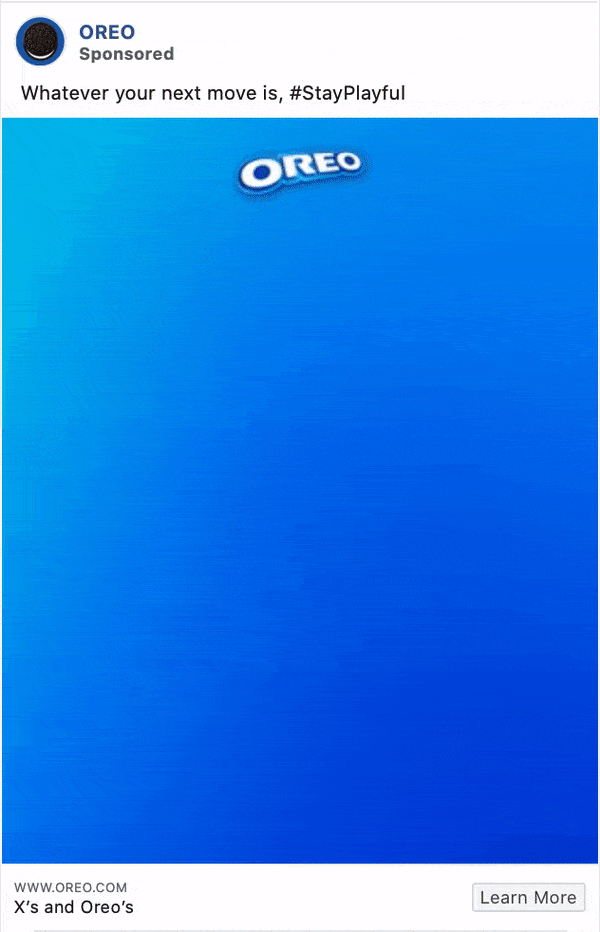
Video Ads are almost identical to Image Ads except for the fact that they feature a video rather than an image. Video ads are useful for showing how a product works or the displaying different variations of a product, or items in a collection. They can also be used to tell a brand's story or highlight the unique features of a product.
Incredibly, these ads can run for as long as 60 minutes, although shorter videos are generally more effective. Ads that are 30 seconds to 1 minute in length are the most common.
Story Ads

Over 500 million users of Instagram view Stories every day; that’s a large audience for Story ads. These ads appear when users are browsing through Instagram Stories. They take up the entire height of a phone screen, and are described as being more immersive for users. With that comes better engagement and, therefore, a greater chance of conversion.
The key to preventing users from simply scrolling past your ads is to make them feel like an organic post. Ensure the post is entertaining and don’t go in too hard on the selling. One way to achieve this is to make use of the features available to organic Instagram users such as stickers, gifs, filters and text overlays.
Instagram Stories ads don’t have to be videos either. They can be images or carousels (a scrolling array of images). Don’t forget a call-to-action at the bottom reminding users to ‘Shop now’ or ‘Learn more’.
Selling on Instagram - Carousel Ads

As mentioned above, carousels feature a series of images (or videos) that each user can swipe through. They are easily identifiable by the arrow watermarks on each image and dots beneath, highlighting how many images make up the post. Appearing in the user's main feed or Instagram Stories, there is a call-to-action on each one. When selling products, each image of the carousel can represent a different product leading to a product page. With up to 10 images to choose from, there’s a lot of potential to capture a user’s attention.
Selling on Instagram - Shopping Ads

Instagram Shopping allows users of the platform to view and purchase within the app (if Instagram Checkout is enabled). Rather than taking users to your website, Shopping ads take them to the product description page within the app, from where they can then make their purchase.
With 44% of Instagram users shopping on the app every week, it can be an excellent option to increase conversions.
Selling on Instagram - Collection Ads

Collection ads are a combination of Carousel and Shopping ads. Showing products from within your product catalogue, they rely on top-quality product data being fed to the platform.
Collection ads are useful because they allow users to purchase directly from a retailer's Instagram store. From here, customers can read the product description and click to purchase.
Selling on Instagram - Reel Ads
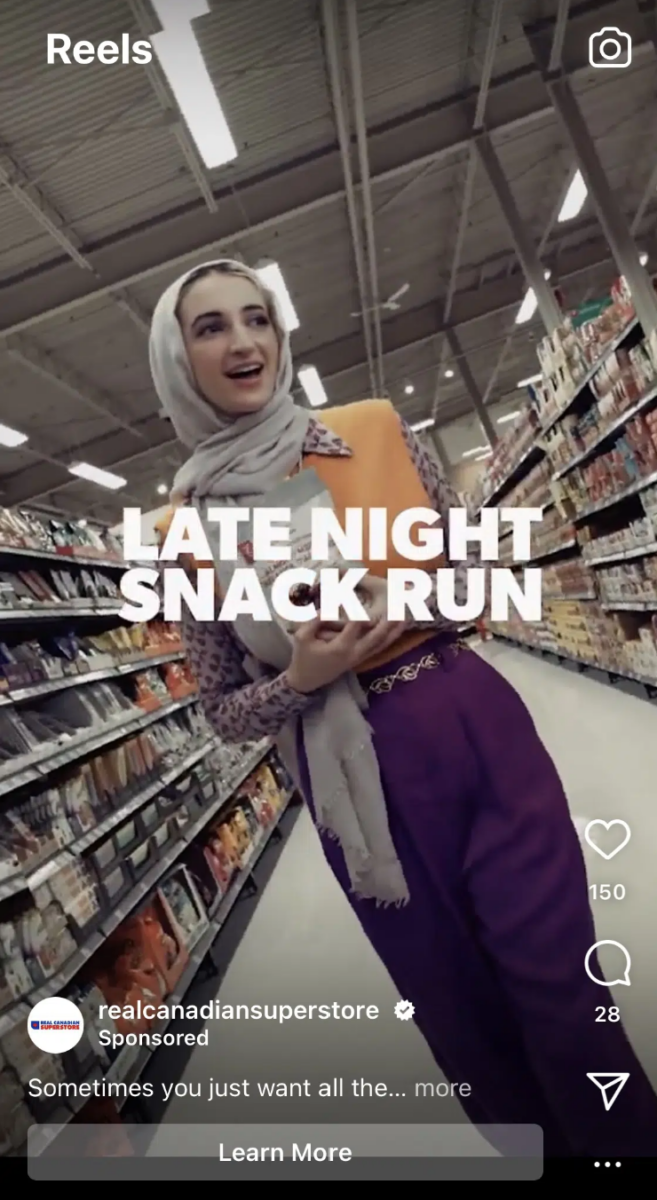
Reel ads are essentially the same as Stories ads, except they appear within Reels rather than Stories. Taking up the full screen of a user’s phone, they can be up to 60 seconds in length and can immediately engage the viewer. As with Stories ads, it’s important to make them as entertaining as possible.
Selling on Instagram - Explore Ads

Despite the name, Explore ads to not appear in the Explore section of the Instagram app. Instead, they show after someone has clicked one of the posts in the Explore grid. This can either be a photo or a video.
Because the Explore part of Instagram is constantly changing for users, usually based on trends, it allows adverts to be shown alongside emerging topics of conversation. Unlike other forms of Instagram advertising, brands and retailers can reuse content from other ads rather than creating specialist content for the Explore part of the platform.
Best practice for selling on Instagram
Finding success on social commerce platforms is achievable, as long as the fundamentals of good product data feed management are in place:
- Make sure your product catalogue is filled out as much as possible – Write accurate product descriptions, fill out every possible category and include eye-catching images to capture attention. An optimised product feed is vital for all forms of e-commerce and is especially important for selling on Instagram Shopping. Learn more about optimising product feed data with Intelligent Reach.
- Use only one product catalogue across Facebook and Instagram – To ensure consistency across the Meta platforms, combine multiple product feed into a single feed for selling on each Meta platform. Manually updating product data is difficult, which is why an effective, automated product data feed management system is vital.
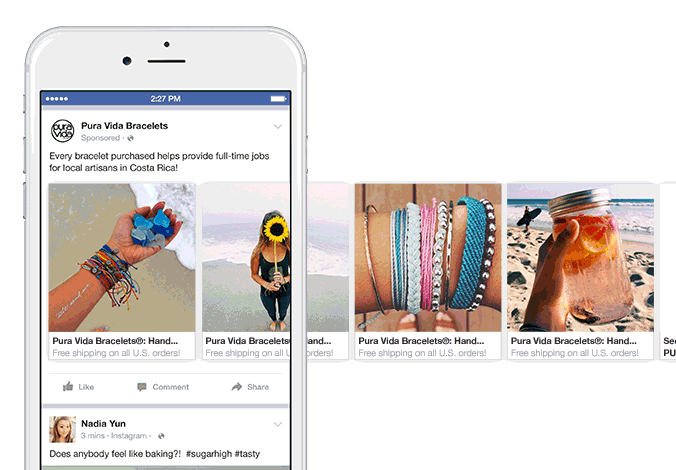
- Use four images for each product – Instagram recommends including at least four images for each product to ensure that users can accurately see what they are purchasing. Instagram is a visual medium, so the higher the resolution of the images the better.
- Improve discoverability with product tags – The most successful businesses on Instagram Shopping use product tags. These make your products clickable directly from an image or video post. Don’t miss out on one of the most effective ways of becoming a successful seller on Instagram; businesses who use product tags see 37% more sales, on average, than businesses that don’t.
- Tag products across the platform – It isn’t just images and videos that cater to product tags. Brands and retailers can also tag up to 30 products in each Reel, Instagram Live or Story.
- Highlight promotions in the app – Running a 25% off sale on your website? You can highlight this in Instagram. By letting your followers know, you maintain a consistent pricing structure across all of your digital channels and marketplaces.
- Post community content – When users tag your company in their organic content, you can ask them if you can share it in your shop. By engaging in this community management, you can enhance your connections with your userbase and improve brand positivity. Publishing user content increases authenticity and heightens purchase intent. It allows users to see exactly how a product looks and works in real life, offering an unfiltered use case that many social media users find compelling.
Conclusion
Working out how you want to sell on Instagram Shopping requires a bit of experimentation. Instagram is a hugely popular social media platform but it is also an incredibly competitive environment for sellers. So getting your products seen by potential customers can feel like an uphill battle. Follow the tips above and test a variety of ad formats to discover the approach that works best for you. Something to bear in mind as you add new channels to your product marketing strategy, is that managing your product data becomes increasingly complex.
A particular issue with social commerce, where the transaction does not take place on your own site, is the management of inventory and synchronisation of orders across potentially hundreds of different third-party platforms. To read more about how the Intelligent Reach platform helps manage the complexity of multiple marketplaces, click here.
Looking to go beyond Instagram? Read more about selling on TikTok and selling on Pinterest.
Tags






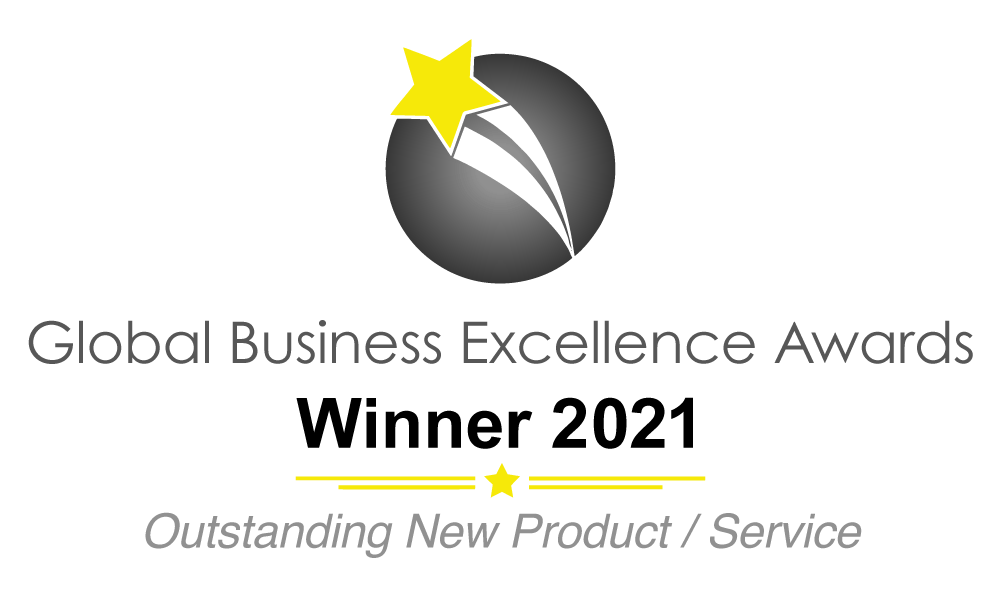



 River Island
River Island